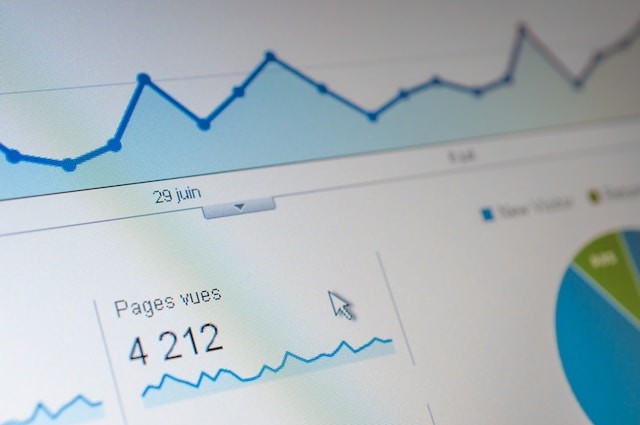Google Analytics is a powerful tool that any marketer can utilize to great success. This free web analytics platform provides valuable insights into website traffic, user behavior, and marketing effectiveness.
Here’s how you can leverage Google Analytics data to optimize your strategies and improve overall performance.
Track and analyze website traffic
Start by identifying your most important metrics, e.g.
- total sessions
- unique visitors
- page views
- average session duration.
Monitor these metrics over time to understand trends and patterns. Identify the effectiveness of your marketing channels (e.g. organic search, social media, or paid advertising). That way, you can allocate resources to the channels that generate the most traffic.
Reading this Attrock guide on data analytics can help you understand your customers better, refine your marketing strategies to better suit them, and ultimately increase customer satisfaction and loyalty.
Furthermore, Google Analytics offers advanced segmentation features that allow you to slice and dice your website traffic data based on various criteria. Segments let you analyze the behavior of specific groups of users, such as new visitors, returning visitors, or users from a particular geographic region. Use this insight into user preferences to tailor your marketing efforts to specific audience segments, all while ensuring compliance with data privacy regulations like GDPR through Google Analytics GDPR

Understand users with behavior flow
Behavior Flow is a powerful feature in Google Analytics that visualizes data on the paths users take on your website. It provides a visual representation of how visitors navigate your pages, helping you identify potential areas for improvement.
By analyzing the Behavior Flow report, you can identify popular entry and exit points, pages with high drop-off rates, the most common paths users take, etc. This information enables you to optimize your website’s navigation, as well as content and calls-to-action, leading to a more seamless user experience.
In addition to Behavior Flow, Google Analytics offers in-depth insights into user behavior on individual pages. The Behavior report provides data on pageviews, average time on page, bounce rate, and exit rate for each page on your website. Analyzing these metrics can help you identify pages that may need improvement or optimization.
Set up conversion tracking
Conversion tracking is crucial for measuring the effectiveness of your marketing efforts. Google Analytics allows you to set up goals and track conversions based on specific actions, such as completing a purchase, filling out a form, signing up for a newsletter, etc.
Use it to measure the success of different marketing campaigns and channels in driving desired actions. Analyze conversion rates, identify top-performing campaigns, and optimize underperforming ones to maximize your marketing ROI.
To take your conversion tracking beyond basic strategizing, consider teaming up with a dedicated Google Analytics agency that specializes in using this tool at a whole different level. Utilize their expertise in optimizing your setup, migrating to Google Analytics 4 if you haven’t already, integrating other analytics platforms, and improving your performance across all associated channels for maximum profitability.

Leverage audience insights
Understanding your target audience is a fundamental requirement of effective marketing. Google Analytics provides a wealth of insights into your audience’s characteristics:
- age
- gender
- location
- interests
- behaviors
- preferences etc.
Use this data to tailor your messaging and campaigns: create personalized content, target specific segments, and refine your marketing personas for more effective campaigns.
Moreover, Google Analytics offers the Audience report, which provides information on the interests and affinities of your website visitors. This data reveals the topics and categories that resonate with your audience, helping you align your content and marketing efforts with their preferences.
Additionally, you can create custom audiences based on specific criteria. That way, you can target your marketing campaigns to specific groups of users who have exhibited certain behaviors or characteristics.
For example, you can create an audience of users who have abandoned their shopping carts and retarget them with tailored campaigns which encourage them to complete their purchase. This level of personalization is one of the rising marketing trends in 2023 and can significantly improve the effectiveness of your strategies.
Utilize E-commerce tracking
If you run an e-commerce website, Google Analytics offers powerful tracking capabilities. You can gain insights into factors like
- sales performance
- revenue
- average order value
- product performance
- conversion rates
- popular products
- shopping behavior
and more to identify opportunities for upselling, cross-selling, and improving the overall online shopping experience. Utilize this data to optimize your product offer, pricing strategies, and marketing campaigns, ultimately driving more sales and revenue.
Furthermore, you can set up custom funnel visualization to track the entire customer journey from initial product views to the final purchase. By understanding where users drop off in the sales funnel, you can implement strategies to reduce friction and increase conversions.
Such granular tracking enables you to optimize the user experience as a whole, streamline the purchasing process, and maximize revenue generation.
In conclusion
Leveraging the power of Google Analytics data is vital for improving your marketing performance. The wealth of information available through this tool lets you make data-driven decisions to fine-tune your campaigns and drive greater success in your marketing efforts.
⸻ Author Bio ⸻ ⸻

Brigitte Evans is a lifestyle blogger with a passion for design, culture, and health. She is a regular writer and contributor to numerous lifestyle blogs and online magazines. She also loves to travel and enjoy the great outdoors.












